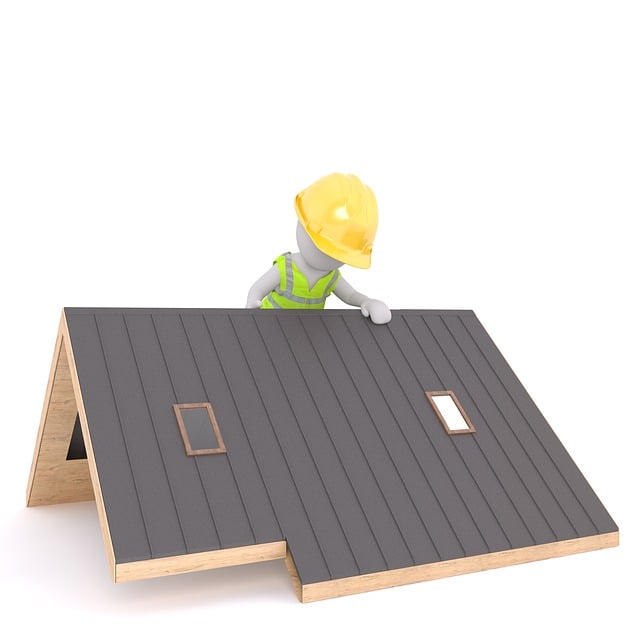When it comes to roofing, selecting the right material for your home can feel like a daunting task. Whether you’re renovating, building a new home, or replacing an old roof, the type of roofing material you choose will significantly impact the longevity, performance, and aesthetic of your home. In this guide, we explore the best roofing materials available, weighing the pros and cons to help you make an informed decision.
Types of Roofing Materials
The roofing industry offers a variety of materials, each with distinct benefits, costs, and lifespans. Here are some of the most popular roofing materials:
1. Asphalt Shingles
Asphalt shingles are the most common roofing material, particularly in North America. They are widely chosen for their affordability and ease of installation.
Pros:
- Cost-effective: Asphalt shingles are one of the most budget-friendly options on the market.
- Versatile: They come in a wide range of colors and styles, allowing homeowners to match the aesthetic of their homes easily.
- Easy to install and repair: Their installation process is straightforward, and repairs are typically simple and affordable.
Cons:
- Shorter lifespan: Compared to other materials, asphalt shingles have a shorter life expectancy, usually around 20 to 30 years.
- Less eco-friendly: Asphalt is a petroleum-based product, meaning it’s not the most environmentally friendly choice.
- Vulnerable to weather damage: Extreme weather conditions, such as heavy winds and hail, can damage asphalt shingles more easily than other materials.
2. Metal Roofing
Metal roofing has grown in popularity due to its durability, sleek design, and eco-friendliness.
Pros:
- Longevity: Metal roofs can last between 40 to 70 years, making them a long-lasting option.
- Energy-efficient: Metal reflects solar heat, reducing cooling costs during hot months.
- Low maintenance: Metal roofs require little maintenance and are resistant to rot, mildew, and insects.
Cons:
- Higher upfront cost: Metal roofing is more expensive initially than materials like asphalt shingles.
- Noise: Rain and hail can create loud noises when striking a metal roof unless proper insulation is in place.
- Potential for denting: Although highly durable, metal roofs can be dented by large hail or falling debris.
3. Clay and Concrete Tiles
Clay and concrete tiles have been used for centuries and are known for their durability and classic appearance, often found in Mediterranean, Spanish, and Southwestern-style homes.
Pros:
- Extremely durable: These materials can last 50 years or more with proper maintenance.
- Fire-resistant: Clay and concrete are non-combustible, making them an excellent choice for areas prone to wildfires.
- Low maintenance: They resist insects, rot, and weather damage, requiring minimal upkeep.
Cons:
- Heavy: Clay and concrete tiles are significantly heavier than other materials and may require additional structural support.
- Expensive: The cost of clay and concrete tiles is higher than asphalt shingles and some metal options.
- Difficult to install and repair: Installation requires specialized labor, and repairs can be costly if tiles are broken.
4. Slate Roofing
Slate roofing is one of the most durable and long-lasting materials on the market. Its natural stone appearance adds elegance and sophistication to any home.
Pros:
- Lifespan: Slate roofs can last up to 100 years or more.
- Aesthetic appeal: The natural beauty of slate makes it one of the most sought-after roofing materials for upscale homes.
- Eco-friendly: Slate is a natural material and has a minimal environmental impact.
Cons:
- High cost: Slate is one of the most expensive roofing materials, both in terms of material and installation costs.
- Weight: Like clay and concrete, slate is heavy and may require structural reinforcement.
- Fragility: While durable, slate can crack or break if walked on, making repairs a challenge.
5. Wood Shingles and Shakes
Wood shingles and shakes offer a natural, rustic look, often found in historic and rural settings.
Pros:
- Aesthetic appeal: Wood shingles and shakes add charm and warmth to homes, blending well with natural surroundings.
- Energy efficiency: Wood has natural insulating properties, helping to regulate indoor temperatures.
- Eco-friendly: Wood is a renewable resource, and many manufacturers source wood from sustainably managed forests.
Cons:
- Maintenance: Wood shingles require regular maintenance to prevent rot, mold, and insect infestations.
- Fire hazard: Wood is a combustible material, making it less suitable for areas prone to wildfires.
- Shorter lifespan: Wood shingles typically last around 20 to 30 years, depending on the climate and maintenance.
6. Synthetic Roofing Materials
Synthetic roofing materials, such as rubber, plastic, or polymer, are designed to mimic the appearance of more expensive materials like slate or wood.
Pros:
- Cost-effective: Synthetic materials are generally more affordable than natural counterparts like slate or wood.
- Durable: Many synthetic materials are designed to be long-lasting and resistant to harsh weather conditions.
- Lightweight: Synthetic roofing is much lighter than slate or clay tiles, eliminating the need for additional structural support.
Cons:
- Appearance: While manufacturers strive to make synthetic materials look authentic, some homeowners may find them lacking the natural charm of traditional materials.
- Environmental impact: Some synthetic roofing materials are made from non-renewable resources and may not be as eco-friendly as other options.
- Unknown longevity: Since synthetic materials are relatively new, their long-term durability is still being evaluated.
Factors to Consider When Choosing Roofing Materials
1. Climate
The climate of your location plays a significant role in the performance of your roofing material. For instance, metal roofs excel in hot climates due to their reflective properties, while clay or slate may be ideal for areas prone to wildfires. Conversely, regions with heavy snowfall may benefit from the durability of metal or slate roofing.
2. Budget
Your budget will inevitably influence your roofing choice. Asphalt shingles offer a budget-friendly solution, while slate, clay, and metal provide more premium options. Be sure to weigh the upfront cost against long-term savings in maintenance and energy efficiency.
3. Aesthetic Preferences
Your home’s architectural style should guide your material selection. For example, wood shakes may complement a rustic cabin, while slate may enhance a Victorian-style home.
4. Durability and Lifespan
If you plan to stay in your home for decades, investing in long-lasting materials like slate or metal can save money over time. However, if you’re looking for a more temporary solution, asphalt shingles may suffice.
5. Environmental Impact
Consider the environmental footprint of your roofing materials. Opting for eco-friendly choices, like recycled metal or sustainably sourced wood, can reduce the overall environmental impact of your home.
Conclusion
Choosing the right roofing material is a crucial decision that impacts your home’s appearance, functionality, and value. Whether you prioritize longevity, aesthetics, or budget, there are numerous materials to choose from that can meet your needs.





